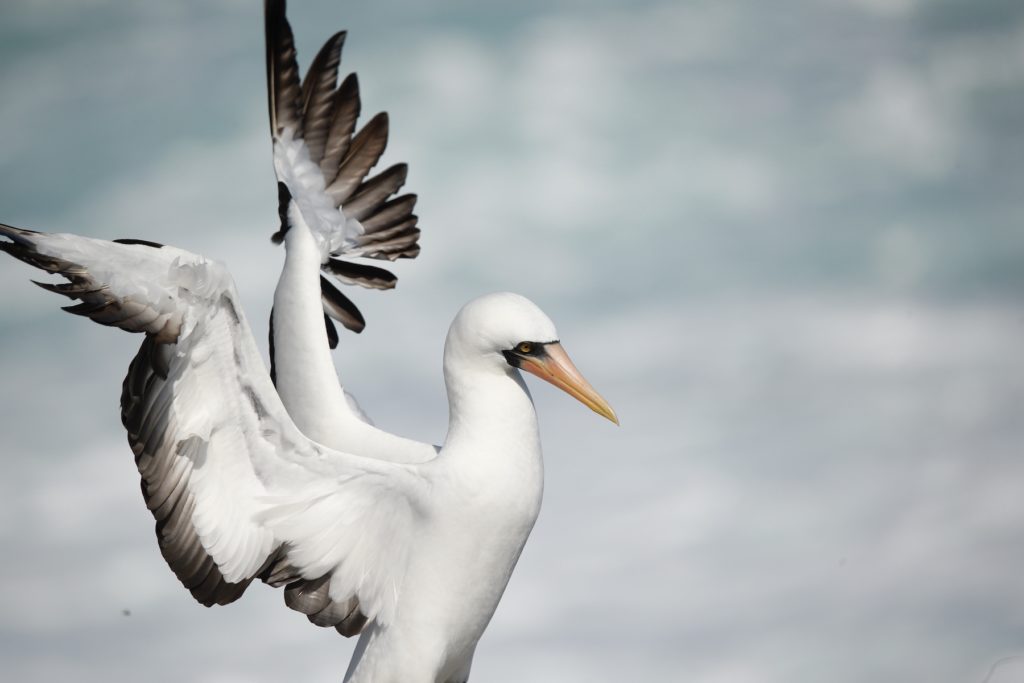
With 45 species of endemic birds, most of which can be viewed extremely easily, the Galapagos is a birdwatcher’s delight. The quality of birdwatching varies greatly between different sites and islands though – you are almost always guaranteed close encounters with common species such as the widespread Darwin’s finches and common seabirds and shorebirds, but to get to the best sites and birds requires some planning. So where are the best places to go birdwatching in the Galapagos? Below is our list of the top birdwatching sites in the Galapagos:
1. Punta Suarez, Espanola
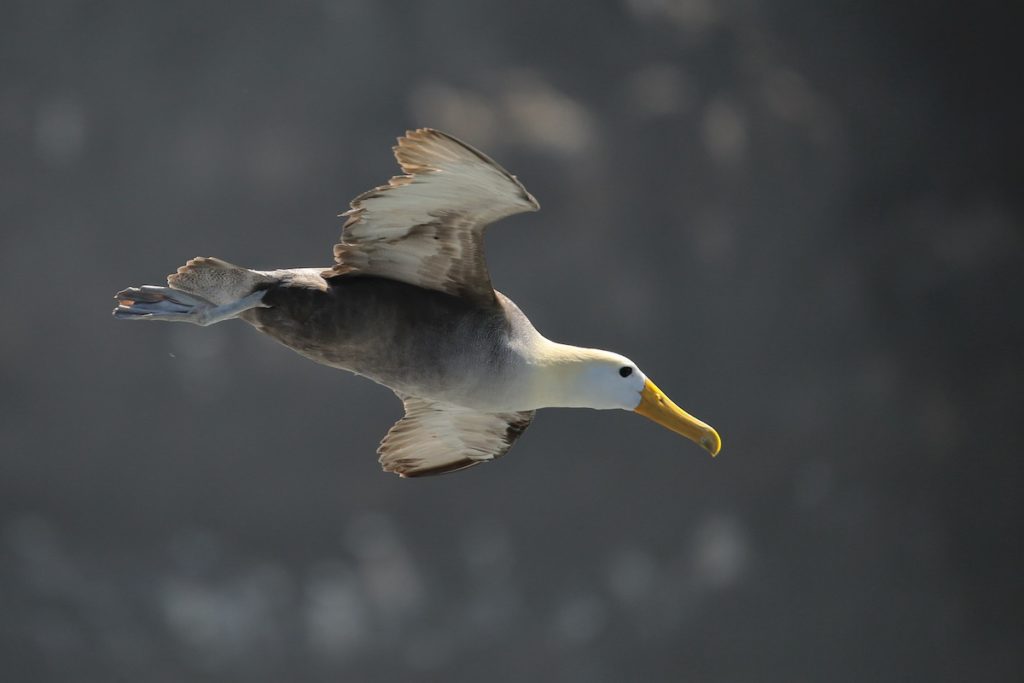
Located on a peninsula at the western point of Espanola Island, Punta Suarez is arguably the best place in the Galapagos for birdwatching. The site is at its best between March and December when it serves as virtually the only breeding site in the world for the iconic Waved Albatross – the world’s sole tropical albatross and a critically endangered species. The site offers visitors the opportunity to walk a roughly 2 mile (3.2 km) rocky trail which passes along a steep cliff face home to Nazca and Blue-footed Boobies, Swallow-tailed Gulls and Red-billed Tropicbirds before cutting through the albatross’ breeding grounds. Along the way you will also have the opportunity to view Espanola’s two endemic bird species (the Espanola Ground Finch and the inquisitive Espanola Mockingbird) as well as Galapagos Doves. Also look out for the island’s resident Galapagos Hawks and Grey Warber-finches.
Highlights
- Waved Albatross – virtually the only breeding site in the world (present March – December).
- Espanola Ground-finch – endemic to Espanola Island
- Espanola Mockingbird – endemic to Espanola Island
- Galapagos Hawk – endemic to the Galapagos
- Grey Warbler-finch – endemic to the Western Galapagos
- Galapagos Dove – endemic to the Galapagos
- Seabirds: Swallow-tailed Gulls, Blue-footed and Nazca Boobies and Red-billed Tropicbirds
2. Prince Philip's Steps, Genovesa
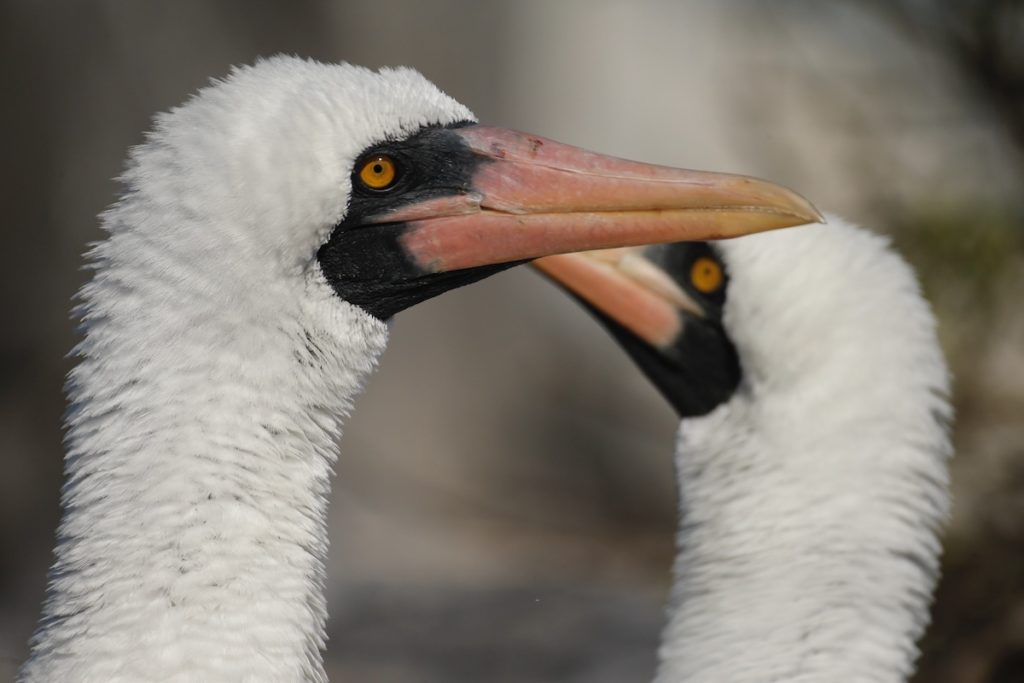
Genovesa is the northernmost island regularly visited by cruise ships. Its isolation relative to the rest of the archipelago means that it hosts not only two island level endemic species (Genovesa Cactus-finch and Genovesa Ground-finch), but an incredible population of breeding seabirds. For this reason Genovesa is often referred to as Bird Island and in this case, Prince Phillip’s Steps is its crowning jewel. The site is the location of a breeding population of Great Frigatebirds, Red-footed and Nazca Boobies and Band-rumped and Wedge-rumped Storm Petrels. It is also a great place to view Red-billed Tropicbirds although a sighting of the resident Galapagos Short-eared Owl subspecies hunting storm-petrels returning to their burrows is the highlight every visitor hopes for. In between the myriad of breeding seabirds you are also likely to encounter Genovesa Cactus-finches and Genovesa Ground-finches as well as the Genovesa subspecies of Galapagos Mockingbird (this subspecies may yet be classified as a separate species pending further genetic studies) .
Highlights
- Short-eared Owl – an endemic subspecies is found on the Galapagos and owls on Genovesa have adapted to hunt storm-petrels.
- Huge storm-petrel colony – both Wedge-runmped and Band-rumped Storm Petrels breed in the lava field above Prince Phillip’s Steps.
- Genovesa Cactus-finch – endemic to Genovesa Island
- Genovesa Ground-finch – endemic to Genovesa Island
- Genovesa subspecies of Galapagos Mockingbird – this subspecies is endemic to Genovesa and may yet be given species level status.
- Breeding colonies of Great Frigatebirds and Nazca Boobies
- The world’s largest breeding colony of Red-footed Boobies is located on Genovesa
3. Tagus Cove, Isabella
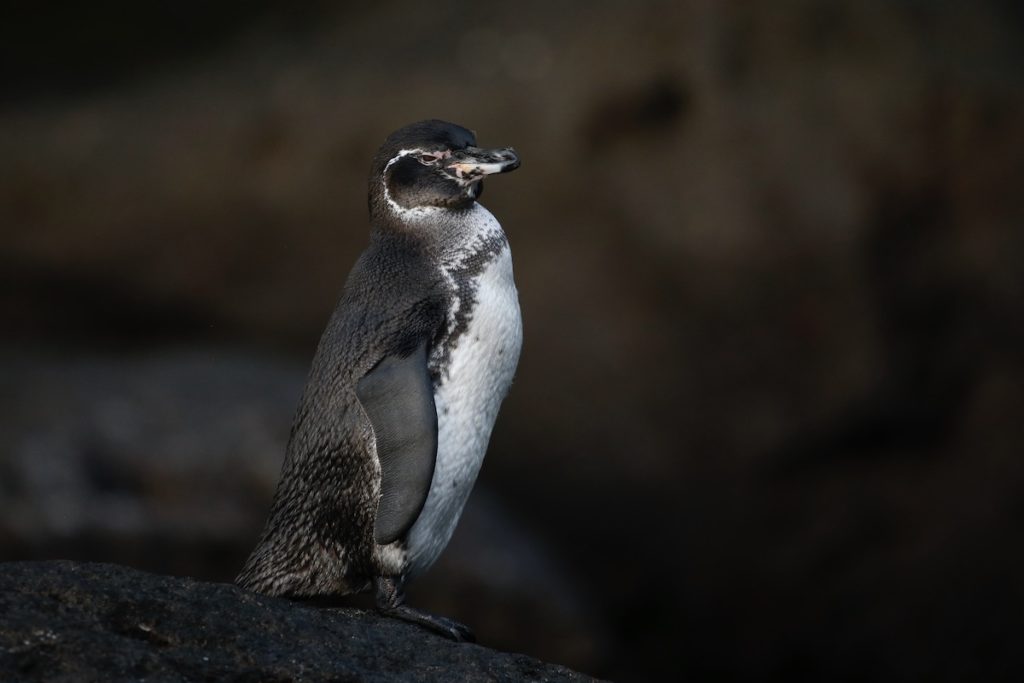
The cold waters between Isabela and Fernandina in west Galapagos are some of the most productive in the entire archipelago, making this region the stronghold of two of the islands’ most iconic species – the Galapagos Penguin and the Flightless Cormorant. There are a number of sites in the area which provide visitors with excellent opportunities to see (and even snorkel with) these two species, including Tagus Cove, Punta Vincinte Roca, Punta Espinosa and Urbina Bay. What makes Tagus Cove stand out to birdwatchers, however, is the mouth watering prospect of encountering a Galapagos Martin. This martin is arguably one of the Galapagos’ trickiest endemics to see and Tagus Cove is virtually the only place where it is encountered with regularity. There is a nesting box set up on top of a small cliff at the entrance of the cove and, if they are present, martins can be seen perched on the cliff, flying over the bay or darting in and out of the boxes. The best way to get to the nest box is by kayak or panga ride (both activities regularly offered by cruises visiting Tagus Cove, but make sure to check your itinerary before hand). A panga ride or kayak along the edges of the cove will produce Flightless Cormorants, Galapagos Penguins, Brown Pelicans, Brown Noddies and even Galapagos Hawks in the trees near the water’s edge. Tagus Cove also offers a scenic hike up to a viewpoint overlooking Darwin’s Lake, but this is not particularly productive birding wise despite being incredibly beautiful.
Highlights
- Galapagos Martin – Tagus Cove is virtually the only place where you are likely to encounter this Galapagos endemic
- Flightless Cormorant – the world’s only flightless cormorant and an iconic Galapagos endemic restricted to the western part of the archipelago.
- Galapagos Penguin – the only penguin to occur in the northern hemisphere and a charismatic Galapagos endemic.
- Seabirds including Brown Noddies, Blue-footed and Nazca Boobies and Galapagos Shearwaters over the open water.
- Galapagos Hawk – a Galapagos endemic usually viewed from a distance at Tagus Cove.
4. The Highlands, Santa Cruz
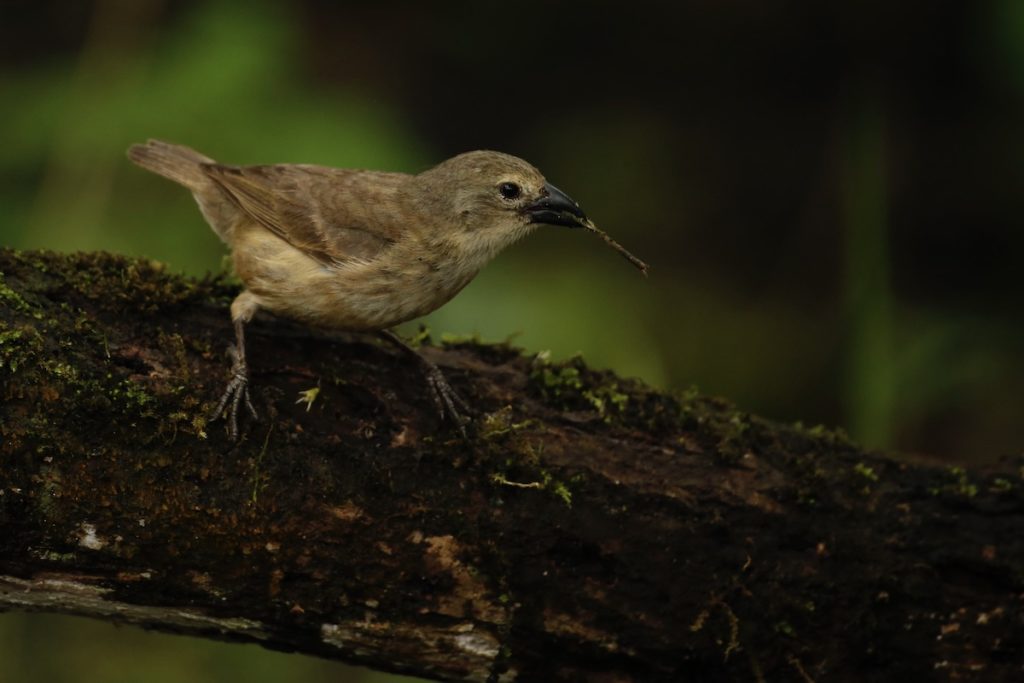
The highlands of Santa Cruz is likely the most accessible site on this list. Unlike the other sites which require you to book a cruise (or at least day trip on a boat), visitors to the Galapagos can stay in accommodation here. This being said, most cruises include day outings to these highlands to visit the three main tourist attractions – the Twin Craters, the tortoise viewing centre and the lava tunnel (itineraries vary so make sure to check yours). The Twin Craters offers visitors a short walk through pristine Scalesia forest which houses Galapagos Flycatcher, Green Warbler-finch, Small Tree-finch, Large Tree-finch, Vegetarian Finch and the world famous Woodpecker Finch. Lucky visitors may encounter a roosting Short-eared Owl here or catch a glimpse of the Little Vermillion Flycatcher although this species has all but disappeared from the highlands in recent years. A walk to view tortoises offers many of the same species with the exclusion of the Short-eared Owl and Little Vermillion Flycatcher. Additional species such as Galapagos Mockingbird and Small, Medium and Large Ground-finches are likely to be encountered here. Watch out for Paint-billed Crakes and Galapagos Rails in patches of tall grass or crossing the network of roads between sites. The Lava Tunnel is a great place to connect with the Galapagos’ endemic subspecies of Barn Owl – one or two often roost at the entrance of the tunnel or in a small shed at the exit.
Highlights
- Woodpecker Finch – this famous Galapagos endemic species can be seen using sticks as tools while it forages for insects beneath the bark of trees.
- Little Vermillion Flycatcher – a Galapagos endemic which has rapidly declined in recent years (it is very rare and special to encounter it in the highlands).
- Galapagos Rail – a very cryptic Galapagos endemic
- Paint-billed Crake – although this species is widely distributed across South and Central America, it is uncommonly common in the highlands of Santa Cruz, making this one of the best places to see it.
- Endemic Darwin’s Finches – Vegetarian Finch, Large Ground-finch, Medium Ground-finch, Small Ground-finc, Small Tree-finch and Large Tree-finch can all be encountered in the Santa Cruz highlands.
- Short-eared Owl – the Galapagos has an endemic subspecies
- Barn Owl – the Galapagos has an endemic subspecies
- Galapagos Flycatcher – endemic to the Galapagos
5. Rabida Island, Rabida
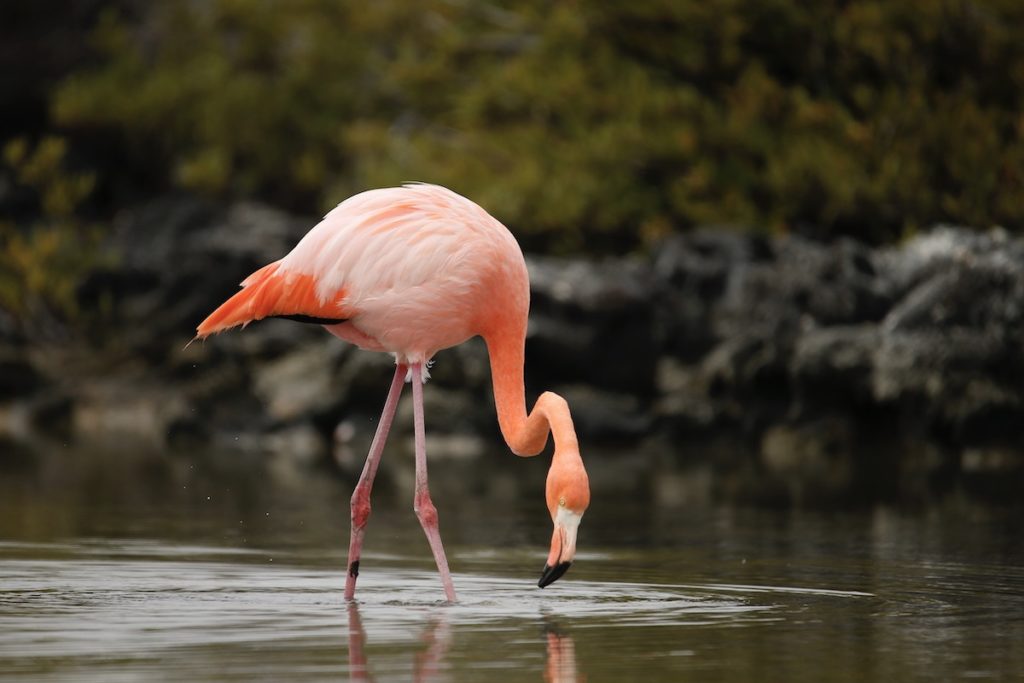
Rabida Island, with its iconic red pebble beaches, offers visitors a short hike along a lagoon and up to a viewpoint. While hiking, look out for Galapagos Dove, Galapagos Flycatcher and Galapagos Mockingbird next to the trail. Galapagos Hawk may be seen soaring overhead and a variety of finches including Common Cactus-finch can be encountered. At the lagoon, scan the water’s edge for Black-necked Stilt and White-cheeked Pintail (the subspecies which occurs in the Galapagos is endemic). A few American Flamingos are also likely to be present.
Highlights
- American Flamingo – the subspecies found in the Galapagos is endemic.
- Waterbirds – White-cheeked Pintails and Black-necked Stilts may be encountered at the lagoon.
- Galapagos Flycatcher – endemic to the Galapagos
- Galapagos Mockingbird – endemic to the Galapagos
- Galapagos Dove – endemic to the Galapagos
- Galapagos Hawk – endemic to the Galapagos
- Darwin’s Finches, including Common Cactus Finch.
